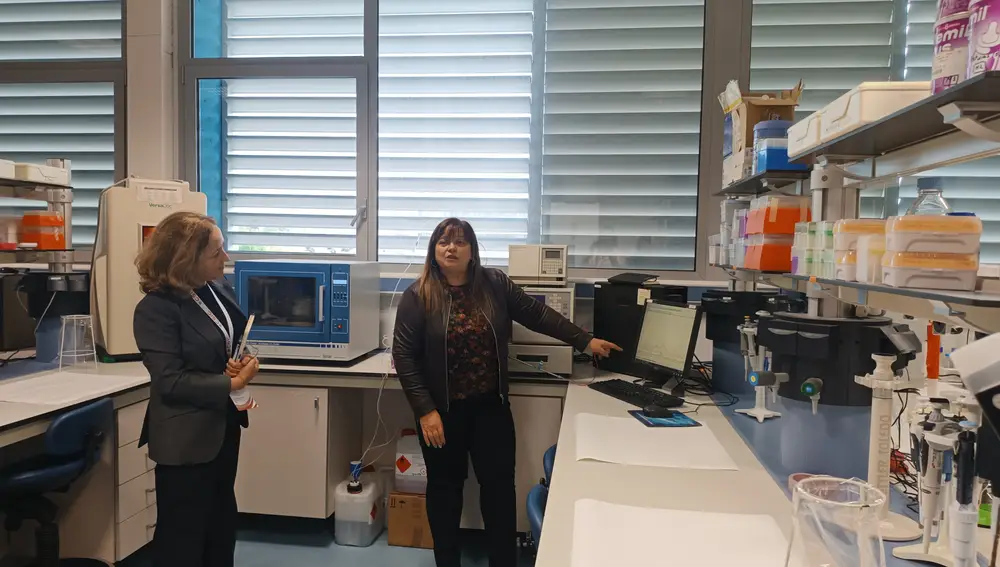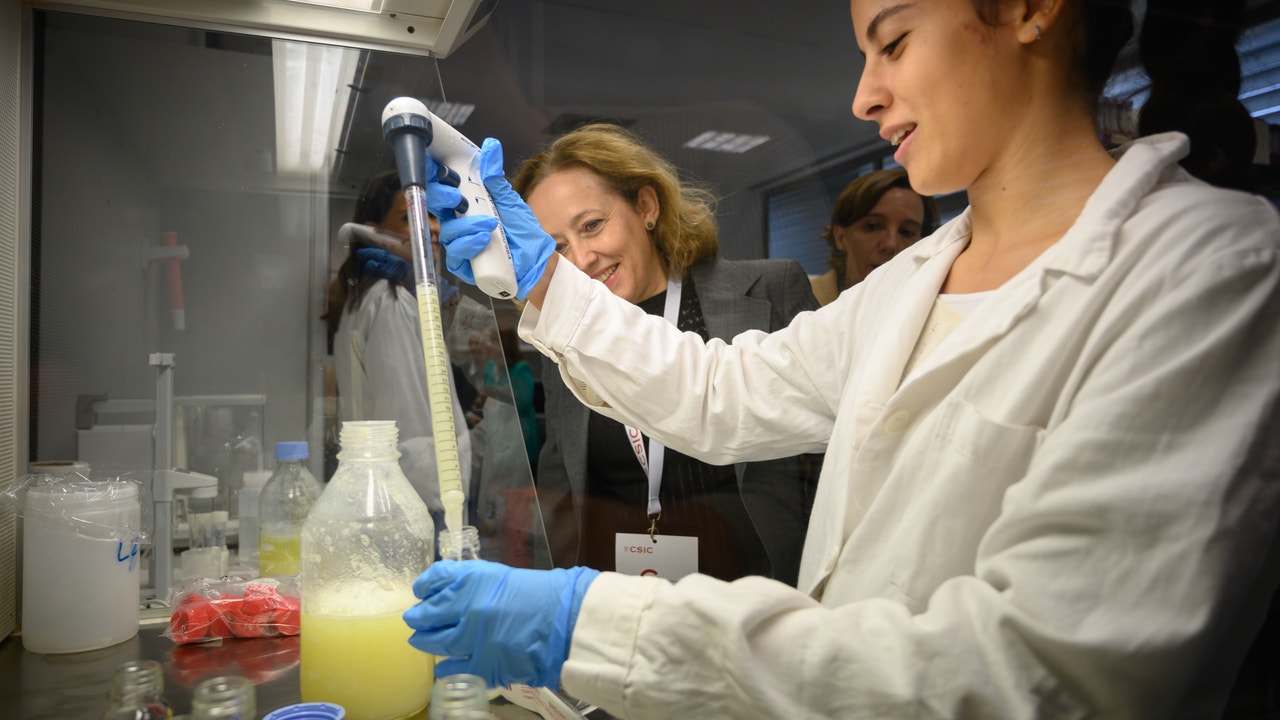Enter any of the laboratories that are part of the vast machinery of the Higher Center for Scientific Research (CSIC) of our country is an adventure that is impossible for anyone to reject. The experience is worth it, since it allows you to understand, and almost feel with your fingertips, the passion and sacrifice with which the thousands of researchers in our country work, in equal parts.
Hours of effort and dedication crowd together within the four walls of the Food Sciences Research Institute (CIAL)a joint center of shared ownership between the CSIC and the Autonomous University of Madrid (UAM). But those same walls are also witnesses of the joys that come from the promising results that the science carried out here is achieving. This is how we were able to perceive it last Thursday thanks to the celebration of a new edition of the Cicero Itineraries focused on childhood, “an initiative designed to live during one day the CSIC from withinbecause we want make visible the work being done and generate an informed debate on how we can move towards a fairer and healthier future, in this case, for all boys and girls, who are a scarce and vulnerable asset in our country, as demonstrated by the worrying obesity figures in childhood and child poverty,” he said. Heloísa del Pinopresident of the CSIC, during her welcoming remarks at the event.
Child health
Among the works carried out in the CIAL facilities, among many others, two stand out with direct implications for the health of minors. One of them is the one led by the Dr. Elena Molinawhose group studies the role of proteins as food allergensan urgent need if we take into account that up to 6% of children suffer from this type of allergy, with a serious impact on their quality of life. «We investigate the reason why some proteins behave as allergens and the influence exerted by the food matrix, environmental factors and the processing to which foods are subjected, to understand the cause of this increase in incidence and to develop methods to treat and prevent these diseases,” Molina explained. In this scenario, one of the most promising lines of research being launched is the production of hypoallergenic functional hydrolysates using new technologiesas well as the study of the structure and susceptibility to hydrolysis of food allergens. «We were interested in proposing something that was useful and we found a way to collaborate with the Infanta Sofía Hospital in Madrid. “They apply oral immunotherapy to children with egg or milk allergies in order to desensitize them more quickly and safely than with the traditional procedure,” details the researcher. And the work is paying off, since after carrying out a hydrolysis process «We managed to eliminate the intact protein from the egg white. Thus we reduce the tolerance acquisition treatment to one year and also the reactions that appear in the process are milder. Over time, we hope that you can even do this procedure at home,” Molina said.

For its part, the Agrifood Chemistry (Agrifood) group of the CIAL, led by the Professor María Ángeles Martínstands out for its strong educational work, but also for scientific milestones worth mentioning. Among the main lines of research carried out by the group is the revaluation of by-products of the food industry as sources of functional food ingredients through sustainable approaches. In this field, “with the aim of improving the health of everyone, but especially children, we want to help prevent obesity and other pathologies through dietary fiber, which is essential for reduce cholesterol, control blood glucose level and produce satiety», argued Martín. For this they take advantage of that waste that is wasted per ton in the food industry, such as onion remains. «From there we get by-products and create ingredients with good properties. After testing it on rats, we observed promising results because they had lower levels of triglycerides, cholesterol and glucose, in addition to reducing their weight,” explained Professor Vanesa Benítez. The next step has been to include these byproducts in a tomato sauce with more fiber and good palatability. «This is very interesting for children, but it is still in the testing phase and has not been able to be scaled because no agri-food company supports us. So it is difficult to make this great advance a reality», lament both ICAL researchers.
Learn from the microbiome
For its part, Yolanda Sanz and his research group, from the Institute of Agrochemistry and Food Technology (IATA-CSIC), are an international reference in work on the function of the microbiome. “We have developed a high capacity to grow intestinal bacteria in the laboratory, which allows us to improve the diagnosis, prognosis and management of some pathologies thanks to the use of microbiome data with more precise and effective strategies. This can be applied to children and adolescents with great impact,” predicted Sanz.
